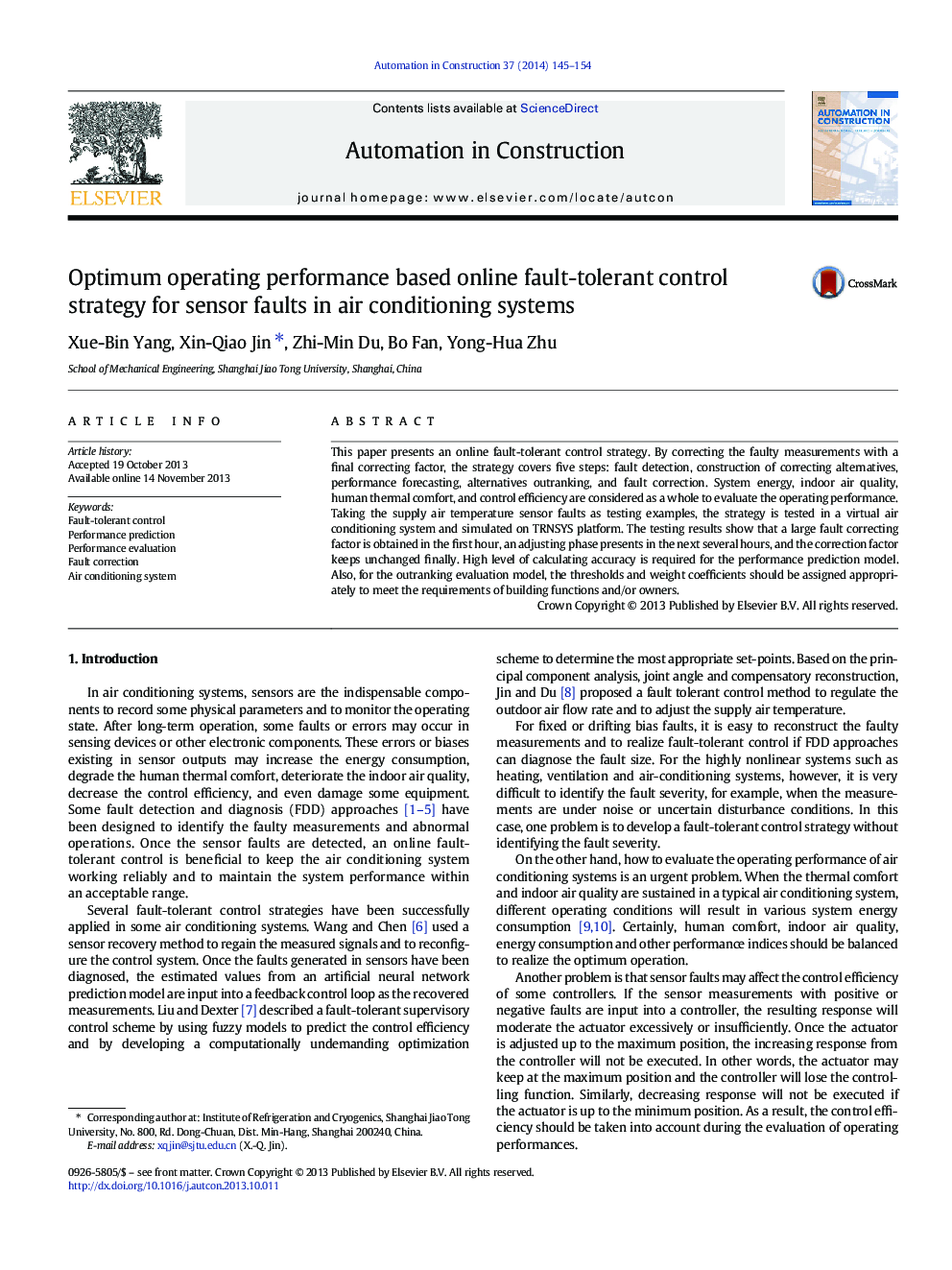| Article ID | Journal | Published Year | Pages | File Type |
|---|---|---|---|---|
| 246582 | Automation in Construction | 2014 | 10 Pages |
•The strategy covers fault detection, alternatives outranking, and fault correction.•The strategy can correct the faulty measurements with a final correcting factor.•Minimum control efficiency is defined to describe operating performance.•The strategy can be used for fixed bias as well as drifting bias sensor faults.
This paper presents an online fault-tolerant control strategy. By correcting the faulty measurements with a final correcting factor, the strategy covers five steps: fault detection, construction of correcting alternatives, performance forecasting, alternatives outranking, and fault correction. System energy, indoor air quality, human thermal comfort, and control efficiency are considered as a whole to evaluate the operating performance. Taking the supply air temperature sensor faults as testing examples, the strategy is tested in a virtual air conditioning system and simulated on TRNSYS platform. The testing results show that a large fault correcting factor is obtained in the first hour, an adjusting phase presents in the next several hours, and the correction factor keeps unchanged finally. High level of calculating accuracy is required for the performance prediction model. Also, for the outranking evaluation model, the thresholds and weight coefficients should be assigned appropriately to meet the requirements of building functions and/or owners.
